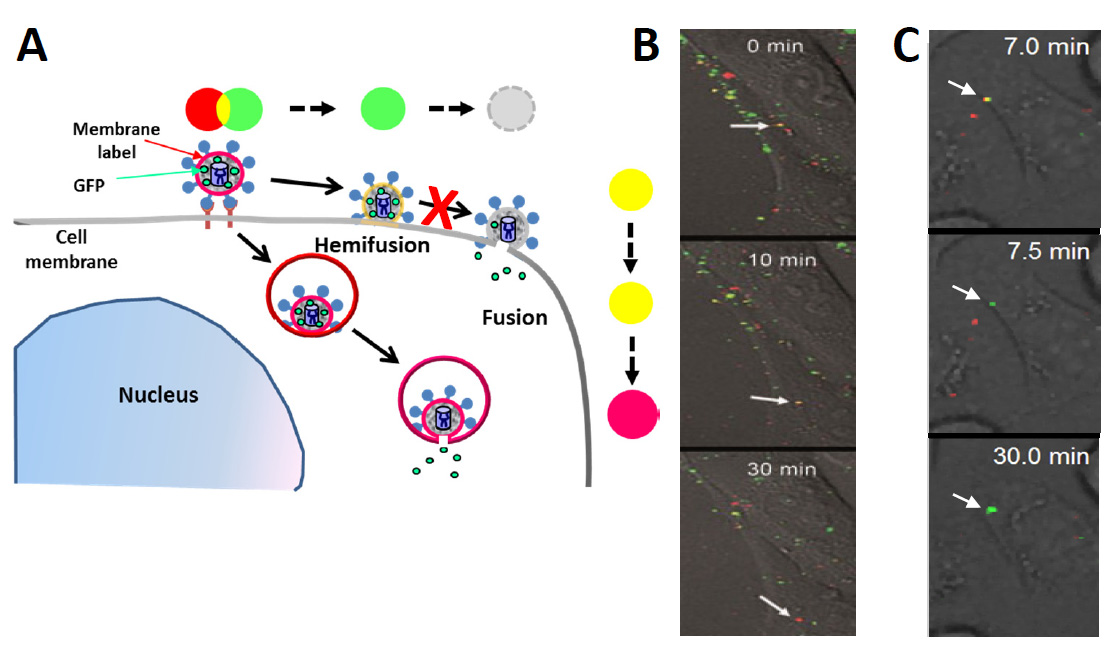PI’s: Gregory Melikian & Madhuri Hedge

Human immunodeficiency virus (HIV) is a causative agent of AIDS, which is a major cause of mortality in all age categories, including children. While the disease progression can be controlled by current anti-retroviral therapy regiments, a cure for HIV does not yet exist. We have extensively studied how HIV enters host cells and identified a number of key intermediate steps that can be targeted by inhibitors and antibodies. Surprisingly, HIV does not infect susceptible cells through fusion of its envelope membrane to the cell plasma membrane, but enters through an endocytic pathway. When endocytosis is inhibited, the HIV virus is unable to fuse with the plasma membrane, implying that infectious entry involves endocytosis. These results lead us to hypothesize that HIV must rely on host factors to initiate fusion, enlarge nascent fusion pores, and transfer the viral capsid into the cytoplasm. In this proposal, we will explore the idea that HIV exploits mechanical tension within the target membrane to enlarge nascent fusion pores and that this tension may be provided by actin remodeling. We will use atomic force microscopy (AFM) to measure forces generated by target cells upon contact with virus particles.
The magnitude of this force could indicate the tension that is likely triggered from endosomal compartments during HIV entry/fusion.


